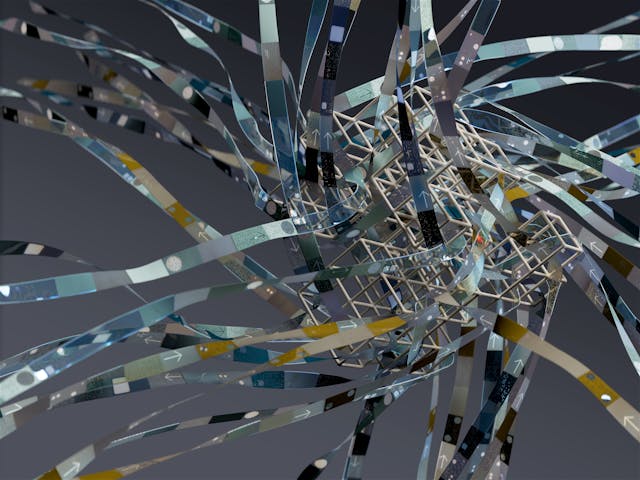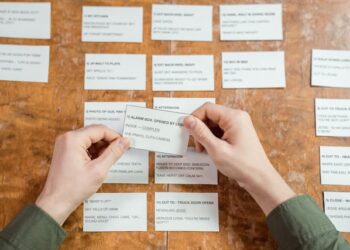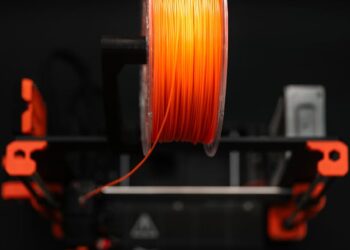CAST: component-aligned 3D scene reconstruction from an RGB image: Reconstruct coherent 3D scenes from a single photo with physics-aware alignment.
Reconstructing 3D scenes from a single RGB image feels almost magical. You take a flat photo, and somehow software populates depth, shape, occluded parts; assembling a plausible 3D world behind it. But doing this well, with consistency, realism, and physical coherence, is extremely tough. That’s where CAST: Component-Aligned 3D Scene Reconstruction from an RGB Image steps in as a bold, new advance.
In this article, I’ll walk you through what CAST is, why it matters, how it works (with deep dives into its modules), challenges, applications, limitations; and where it might go next. I aim to make it rich, useful, and engaging; not fluff.
What You'll Discover:
Why CAST matters (and where we were stuck before)
The single-view 3D reconstruction challenge
Imagine you have a photo of a room: sofa, table, lamp, and a bookshelf. Some parts of the sofa are occluded behind the table. You need to guess their unseen geometry. Moreover, you need to place each object relative to the others in 3D; with no collisions, no floating chairs, no weird intersecting geometry. A single image gives only 2D color, texture, and lighting clues. Depth and occluded surfaces are ambiguous.
Prior methods tackled this in different ways: monocular depth estimation, volumetric inference, or neural radiance fields (NeRF) and variants. But each approach has tradeoffs. Monocular depth gives a rough depth map but fails on occluded surfaces. End-to-end volumetric methods struggle with high resolution and object-level consistency. NeRF-based methods are great for novel view synthesis, but less suitable when you want discrete, manipulable object meshes.
Even more, reconstructing full scenes; not just isolated objects; introduces relational complexity. Objects must not intersect, must make spatial sense (e.g. a mug sits on the table, not halfway inside it), and should obey physical plausibility.
Thus, single-image 3D scene reconstruction is still a frontier problem.
What CAST brings to the table
CAST introduces a component-aligned, object-wise reconstruction + alignment + physics-aware correction pipeline.
The core idea: break the scene into objects, reconstruct each object independently (including occluded parts), and then align them into a coherent, physically plausible scene.
Key novelties include:
- Using segmentation + relative depth to parse object-level cues from the image.
- A reasoning module to infer inter-object spatial relationships (which object supports which, adjacency, contact).
- An occlusion-aware generation model to hallucinate full object geometry from partial visible data.
- An alignment stage that computes transformations (scale, rotation, translation) to embed each object into the global scene.
- A physics-aware correction stage that uses relational constraints and signed distance fields (SDF) to optimize poses, eliminate penetrations, and enforce contact/support consistency.
By merging semantic reasoning, geometry generation, and physics-aware optimization, CAST pushes the quality and coherence of single-image reconstructions beyond what many prior methods could. In benchmarks and qualitative comparisons, CAST shows noticeably better alignment, fewer floating objects, and more plausible interactions than many earlier pipelines.
So yes: CAST is not just another incremental tweak. It’s a more holistic system that addresses multiple failure modes at once.
Deep dive: How CAST works step by step
Let’s peel back each major stage in CAST’s pipeline, exploring how it handles the challenges.
1. Scene analysis: segmentation + depth + point cloud
The first task is to parse the input RGB image into components. CAST uses advanced segmentation models to detect object instances and segment them.
Simultaneously, it performs monocular depth estimation or pixel-aligned point cloud generation to get depth cues per pixel. The depth data lets each segmentation mask be associated with a local partial 3D point cloud.
Together: segmentation gives “which pixels belong to what object,” and depth gives approximate spatial layout. This dual cue (semantic + geometric) forms the backbone for object reconstruction.
Imagine you see a lamp partly hidden behind a vase. Segmentation identifies the lamp’s visible pixels; the depth map gives you how far those pixels are from the camera. That tells you roughly where the lamp is in 3D space, though not its hidden backside.
One important feature: CAST operates in a canonical object space for reconstruction. Each object is, at first, treated independently, normalized, and reconstructed before being transformed back into the scene. This modular approach simplifies generation and helps with consistency across objects.
2. Object-level 3D generation (occlusion-aware)
Now comes a significant challenge: how to reconstruct each object’s full 3D geometry; including parts that are occluded or simply not visible in the image. You might see only a side of a chair, but you want the full chair mesh.
CAST uses a generative model conditioned on the partial point cloud and the segmentation mask. The idea: given visible cues plus learned priors, hallucinate the missing surfaces. But it must do so in a geometrically consistent way.
To mitigate ambiguity, CAST uses masked autoencoders to reason about occluded regions, combining learned image features with geometric cues. The model infers a full object in a canonical coordinate system.
Because each object is reconstructed independently, you can get high-fidelity shapes for each, rather than flattening the entire scene at once.
3. Alignment: embedding objects into the scene
Once each object is reconstructed, it needs to be placed into the global scene coordinate frame; scaled, rotated, and translated so that they align with original depth cues and scene consistency.
CAST uses a pose alignment generation model that takes the generated object mesh and aligns it to the scene’s partial point cloud and segmentation context. In practice, it computes a similarity transform (scale, rotation, translation).
Because the partial point clouds provide approximate correspondences, the alignment model can anchor the generated object into the scene where it best fits the visible data.
After alignment, the object meshes are assembled into a coarse scene reconstruction.
4. Physics-aware correction: relational adjustment
Now, the crude assembly might have flaws: objects might slightly penetrate each other, hover slightly, or lack proper contact constraints. Here’s where CAST’s physics-aware module enters.
CAST builds a fine-grained relation graph, modeling pairwise relationships (e.g. “object A supports B”, “contact with the floor”, adjacency). From this graph, a constraint graph is derived, capturing desired non-penetration, support/contact, and distance constraints.
Then, CAST optimizes object transformations using signed distance fields (SDFs) to penalize penetration, floating objects, and violations of physical consistency.
The final result is a polished scene where each object sits naturally, without intersections, with support and contact relationships respected.
Strengths, unique contributions, and radical angles
Let me highlight where CAST stands out; and what makes it special.
- Component-wise modular design Many prior works treat the entire scene as one volumetric or neural field. CAST instead breaks things into objects, generating them independently in canonical space, then aligning and optimizing.
- Semantic + geometric coupling Using segmentation + depth coupling helps the system avoid having to guess structure from scratch. The segmentation constrains object boundaries; the depth constrains rough placement.
- Inter-object spatial reasoning CAST integrates a reasoning module to analyze relative object positions and their roles (which supports which). This is akin to giving the system a “sense” of spatial common sense about scenes.
- Physics-aware relational correction Instead of relying purely on geometry, CAST brings in physics constraints (contacts, support, no penetration) via SDF-based optimization.
- Open-vocabulary segmentation & generalization CAST supports object categories beyond the training set, via open-vocabulary detection networks.
- Addressing occlusion elegantly The occlusion-aware generation, combined with masked autoencoders and partial point clouds, helps fill in invisible parts in a better way than naive heuristics.
- Fine-grained alignment The use of a dedicated alignment model ensures each object fits coherently with the visible cues.
In sum: CAST blends techniques from vision, generative modeling, graph optimization, and physics; giving a robust pipeline that addresses many weak spots in earlier methods.
Example scenario: from a photo to a 3D scene
Let me walk you through a concrete (though simplified) example to ground this.
Suppose you hand CAST a photo of your desk: laptop, coffee mug, a book standing upright, and a potted plant. The left half of the laptop is hidden behind the mug; the plant leaves occlude part of the book spine. The table is angled slightly.
- Segmentation + depth CAST recognizes 4 objects: laptop, mug, book, plant. It segments their visible pixels. Depth estimation yields relative depth maps; for instance the mug might be slightly closer than the laptop, the plant further back.
- Object-wise generation
- For the laptop: only the right side is visible. Using priors and partial geometry, it hallucinates the left side, keyboard, underside, etc.
- For the mug: most of it is visible, so less hallucination is needed.
- For the book: it guesses the unseen pages and back cover.
- For the plant: given leaves and trunk parts, it fills in missing branches or leaves.
- Alignment Each reconstructed object is transformed (scaled, rotated, moved) so it aligns with the partial depth points and segmentation mask. If the mug depth suggests it’s 15 cm from the camera, the mug mesh is placed accordingly.
- Physics correction The graph might encode “mug should rest on the table,” “book should stand upright,” “plant pot should contact table,” and “laptop should not intersect the mug or book.” Optimization tweaks the transforms so there’s no collision; e.g. the mug moves slightly to avoid penetrating the laptop base, perhaps rotates subtly to align the handle. The end result: a coherent 3D model of the desk arrangement you can now view from different angles, manipulate, or feed into a simulation.
For the user, the magic is that you get a clean 3D scene from a single photograph; objects correctly spaced, no weird overlaps, everything physically reasonable.
Applications and impact
CAST isn’t just academic showmanship; it unlocks real value in many domains:
- Game development & VR/AR Instantly convert real-world scenes into 3D environments, saving hours of manual modeling.
- Film and virtual production Capture a photo, reconstruct the scene, and integrate digital assets or effects seamlessly.
- Robotics and simulation Reconstruct a robot’s workspace environment, complete with contact relationships and geometry, enabling realistic simulation.
- Interior design & architecture Designers can photograph a room and get a 3D model to play with; move furniture, test lighting, or generate new layout variants.
- Heritage & cultural preservation Photos of historical interiors can be reconstructed into plausible 3D scenes for preservation, virtual tours, or archives.
- E-commerce / virtual try-on Sellers could reconstruct a snapshot of a room and insert 3D models of furniture to preview placement.
Comparisons with prior methods
To appreciate CAST’s advances, let’s contrast it with some prior conceptually similar approaches.
- CoReNet attempted to reconstruct all objects in a single pass, employing volumetric representations and ray-traced skip connections to preserve detail.
- Pros: joint coherence, global consistency
- Limitations: less control, difficulty scaling to fine detail or modular editing
- Holistic 3D Scene Parsing aimed to jointly parse geometry and semantics, often using CAD model retrieval and scene grammars.
- Pros: strong interpretability
- Limitations: rigid class sets, domain-specific, weaker in free-form scenes
- Atlas-style or TSDF-based models regress an entire scene TSDF directly from posed views.
- Pros: continuous, smooth surfaces
- Limitations: needs multiple views, harder to extract distinct meshes per object
CAST stands out because it:
- Decomposes into object-level generation (giving flexibility)
- Integrates physics and relational graphs (for realism)
- Supports open vocabulary segmentation (generalizes beyond fixed class sets)
- Combines semantic, geometric, and physics cues
Limitations and caveats
No method is perfect, and CAST has its share of caveats.
- Dependency on object generation quality If the generative model hallucinates poorly, you’ll get odd shapes or missing detail.
- Lack of lighting estimation / background modeling CAST currently does not estimate realistic lighting or model background geometry well.
- Performance degradation in complex scenes Highly cluttered scenes with dense object overlap pose more challenges.
- Computational cost The pipeline involves heavy segmentation, generative modeling, alignment, and optimization. Real-time or mobile deployment is difficult.
- Ambiguity in occluded regions Hidden geometry will always require guesses. Reconstructions may not match reality perfectly.
- No perfect guarantee of physics realism Physics-aware modules help, but extreme cases can still break consistency.
- Limited to static scenes Dynamic or deformable objects remain outside its scope.
What’s next? The horizon beyond CAST
CAST opens new possibilities. Here are some promising future directions:
- Lighting & material estimation for photorealistic integration.
- Temporal or video-based extensions for dynamic scene reconstruction.
- Better generative priors as object models improve in fidelity.
- Real-time or efficient versions for interactive editing.
- Deformable or articulated object support for more complex assets.
- Integration into creative pipelines like Blender, Unreal, or Unity.
- Learning relational priors from large scene datasets for stronger spatial common sense.
- User-in-the-loop corrections for semi-automatic workflows.
Key Takeaways
- CAST is a component-aligned pipeline: reconstruct objects independently, then align them coherently in 3D.
- It fuses semantic segmentation, depth estimation, and generative modeling to hallucinate full object shapes.
- A spatial reasoning module helps infer object-object relationships and roles.
- Physics-aware correction ensures the final scene is free of collisions, hoverers, or floating objects.
- In experiments, CAST outperforms prior single-image scene methods in coherence and realism.
- It has wide applicability: gaming, VR/AR, robotics, film, interior design, heritage, e-commerce.
- But limitations remain: no lighting modeling, struggles in dense scenes, dependence on generation quality, heavy compute.
- Future directions include lighting integration, real-time adaptation, dynamic scenes, and tighter generative models.
Additional Resources:
- Representing Scenes as Neural Radiance Fields for View Synthesis: A foundational paper introducing the neural radiance field framework that revolutionized novel view synthesis and scene reconstruction.
- 3D Parsing and Reconstruction from Single RGB Images: A classic approach that combines semantic parsing, CAD model retrieval, and 3D reconstruction from a single image.





